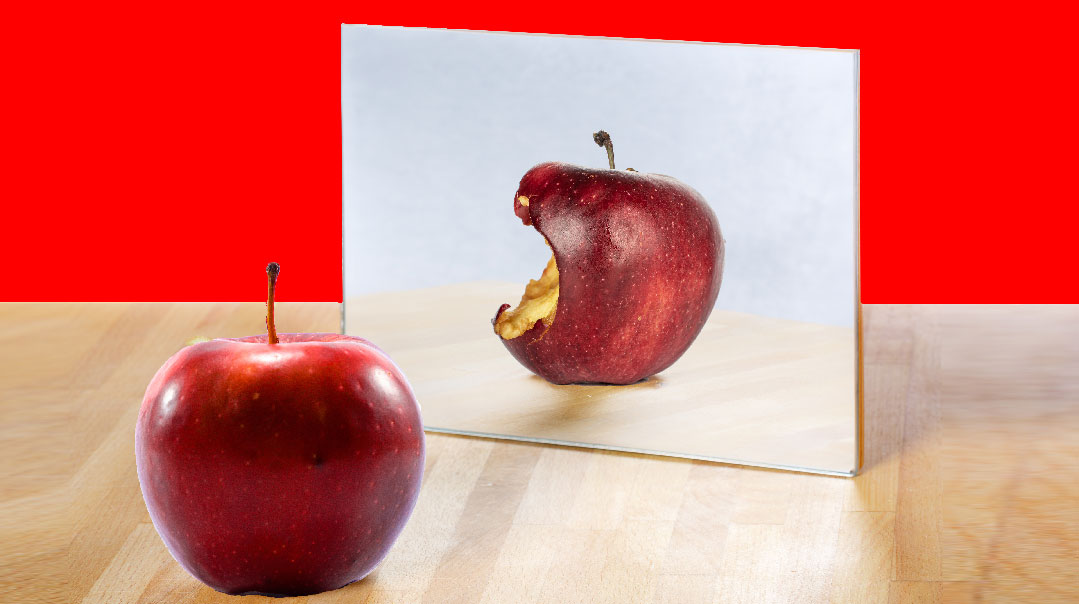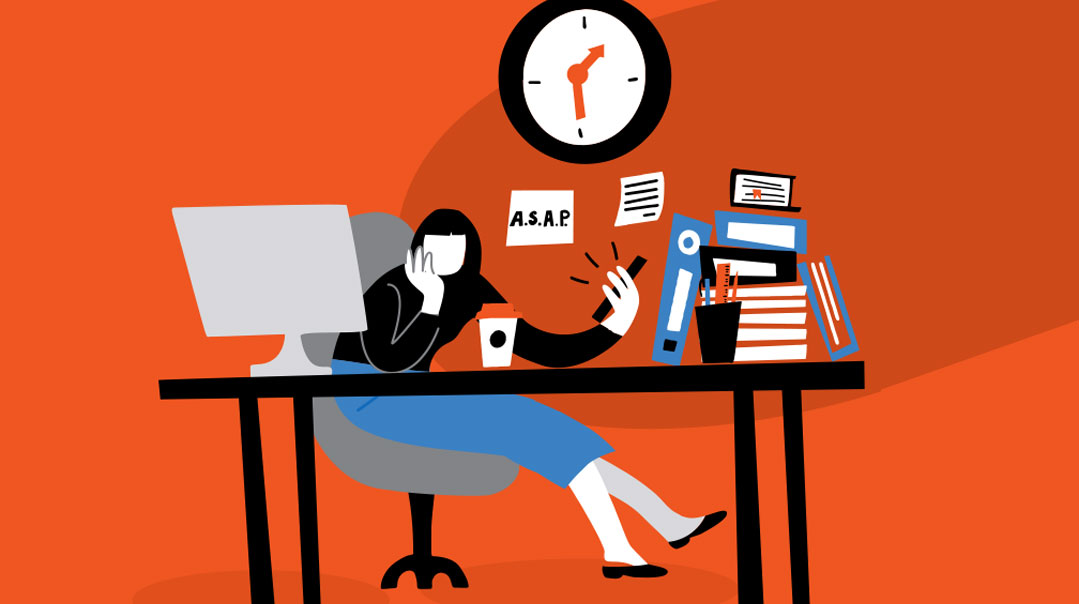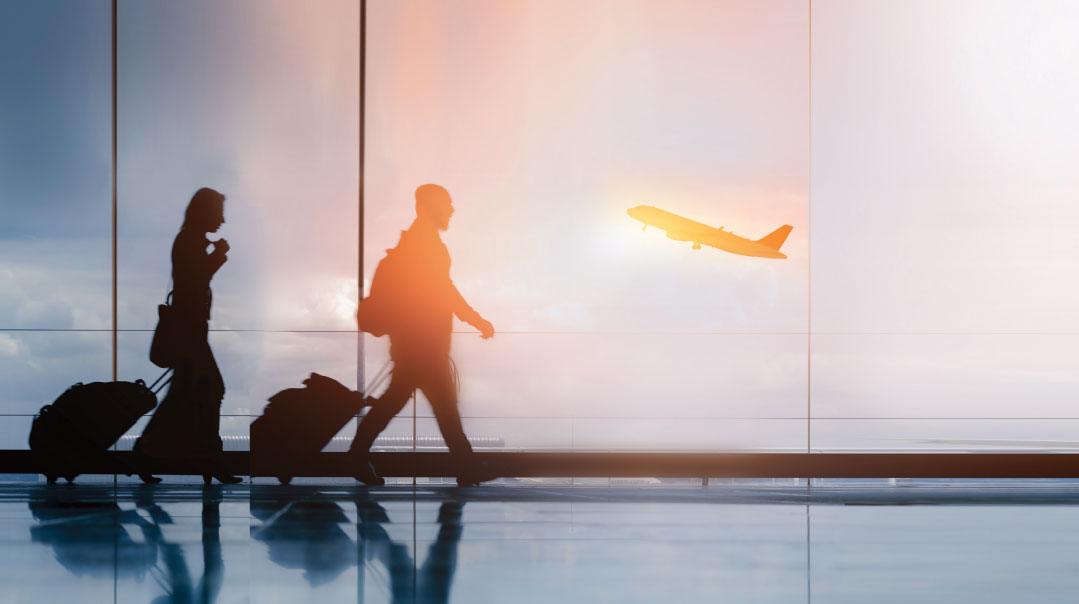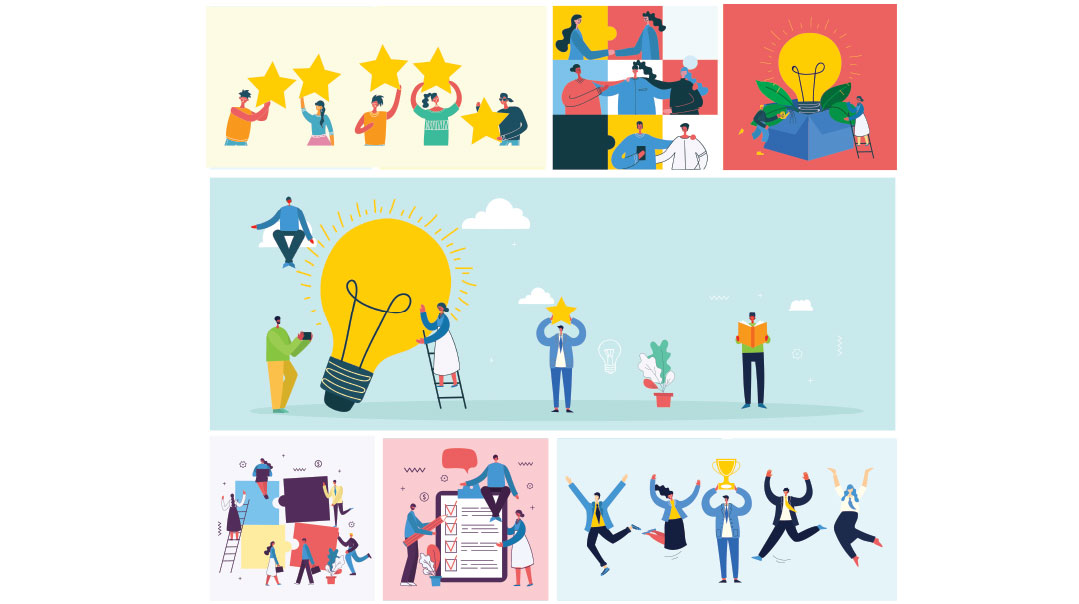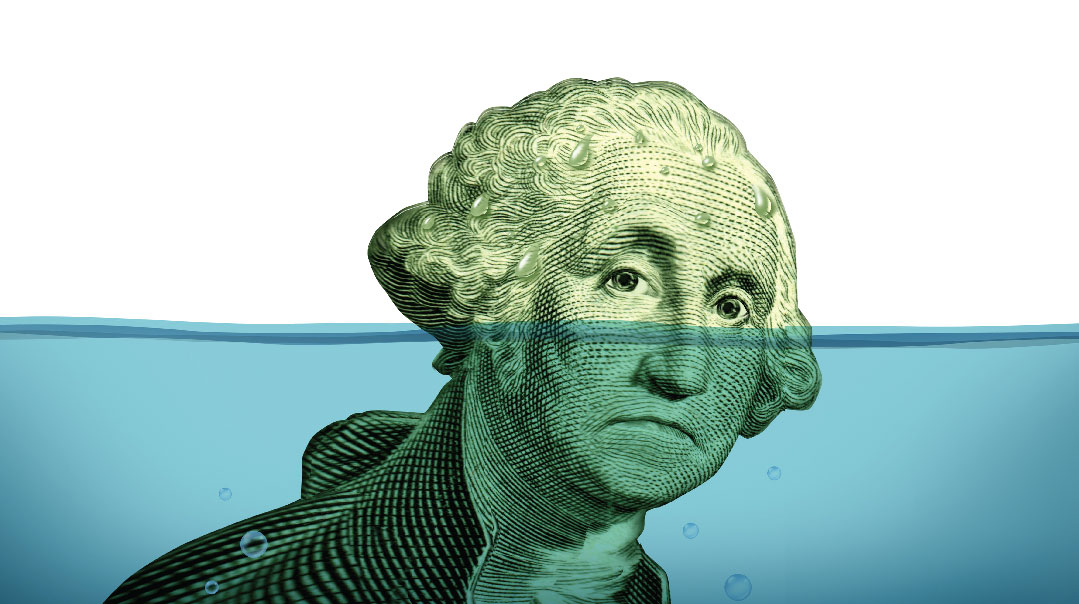A Fitful Night’s Sleep
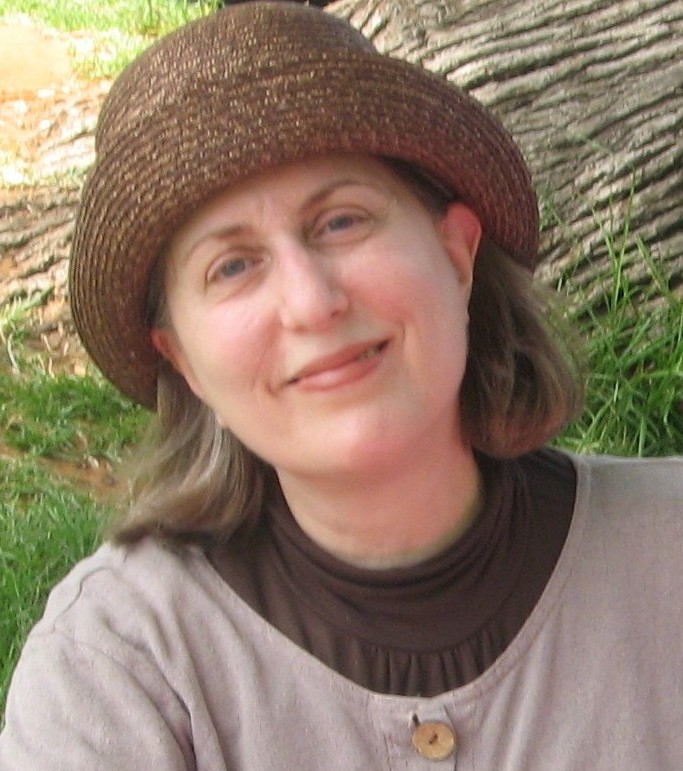
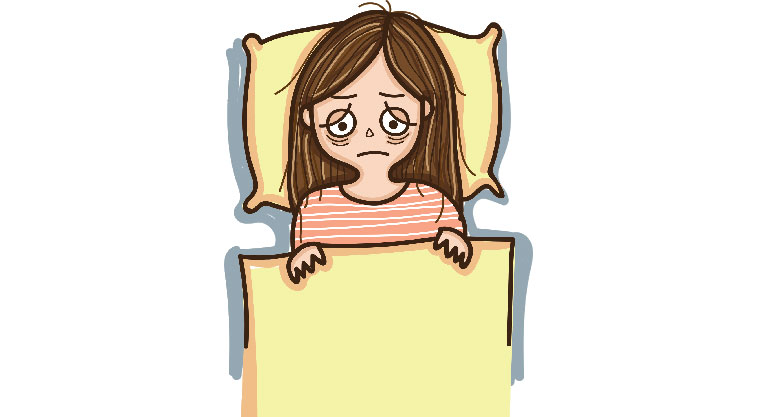
High blood pressure, stroke, and dementia are just a few of the medical conditions that can be aggravated by sleep apnea. How do you know if you have it? If your eyes are closing as you read this, you may be a sufferer
T
oothbrush and pajamas? Check.
Book? Check.
Chocolate? Double-check.
Electric fan?
Hmmm. The receptionist did say to bring whatever will help me get a good night’s sleep. Does that include a fan?
It’s not as if I’m going someplace exciting like Hawaii or the Swiss Alps. I’m going to the place we all go to every night: dreamland. The catch, though, is that tonight I have to sleep. No tossing and turning while I mentally plan the Shabbos menu or struggle with the opening of my next article. Tonight, I’m going to get tested for a medical condition called sleep apnea.
Alarming Studies
Sleep apnea may not sound like a big deal. In fact, some of sleep apnea’s symptoms — loud snoring, a tendency to doze off when at a shiur or while doing some other sedentary activity, feeling tired even after a full night’s sleep, waking up with a headache — can seem more irritating than serious.
Yet this sleep disorder, in which breathing repeatedly stops and starts throughout the night, lowers oxygen levels in the blood, which can increase a person’s risk of developing high blood pressure and cardiovascular disease; insulin resistance and Type 2 diabetes; and liver problems.
In other words, it’s no laughing matter. But because the air-pressure-pumping mask sleep apnea sufferers have to wear is sometimes uncomfortable — not to mention ridiculous looking — many people are reluctant to get tested. I know I was, even though I suffer from morning migraines and often feel tired during the day, no matter how much I’ve slept the night before.
Then I came across studies done in 2017 and 2018 which made me decide I could put up with that mask: Chronic oxygen deprivation while you sleep makes you more likely to develop some form of dementia.
That clinched it. After getting a referral from my doctor, I booked an appointment at the sleep laboratory at Jerusalem’s Shaare Zedek Medical Center. On an August night six months later (these things don’t happen overnight), I’ve packed my overnight bag. Fortified with plenty of snacks (in case I get the munchies at 2 a.m.) and a book I’ve read before (no just-one-more-chapter thrillers tonight), I head out the door.
The Dream Team
I’m walking down a long, eerily empty corridor. Signs point the way to various places. None of them are where I want to go. I continue to wander through one empty corridor after another. As I wander, I have the feeling I’ve had this dream before.
Only this time it isn’t a dream. I’m wandering through the deserted corridors of the hospital. The security guard at the front door informed me the sleep lab is on this floor. So why isn’t there a sign? Why is the lab as elusive as a full night’s sleep on Erev Pesach?
A woman with a clipboard appears and calls my name. I’ve finally stumbled into the right corridor. Another woman is sitting there with her son. I give the boy, he must be about seven or eight, a reassuring smile. This is going to be a fun adventure, right?
I later learn the sleep lab has four rooms. The other two are occupied by the more usual candidates for sleep apnea: middle-aged men.
According to the US-based National Sleep Foundation, about 18 million Americans have sleep apnea. Most of them are male, overweight, and over the age of 40. Other factors are neck circumference (a thicker neck may have a narrower airway), a family history of sleep apnea, use of alcohol, sedatives, or tranquilizers on a regular basis, smoking, and frequent nasal congestion. But even though men are two to three times more likely to have sleep apnea than others, anyone at any age — including children — can have the disorder.
Children with sleep apnea share some of the symptoms as adults, such as snoring, long pauses between breaths, breathing through the mouth, and a great deal of tossing and turning. It’s estimated that less than five percent of children suffer from sleep apnea, and some of them will grow out of it. But when a child does have sleep apnea, the disorder can take a heavy toll: It can aggravate the learning and behavioral problems in as many as 25 percent of children with ADHD.
While home tests for sleep apnea are available and certainly more comfortable, they’re not as accurate as nocturnal polysomnography — an overnight stay in a sleep lab, where you’re hooked up to equipment that monitors your heart rate and rhythm, lung and brain activity, breathing patterns, leg movements, and blood oxygen and carbon dioxide levels while you sleep. I’ve opted for the overnight stay, because if the results from a home test are inconclusive my health insurance won’t pay for an additional test in the lab.
After the boy and his mother are shown to their room, I’m escorted to mine. I don’t know about sleep labs in the US or elsewhere, but this lab is obviously the poor cousin of the Israeli medical system. The bed, a simple mattress on a wooden frame, doesn’t look inviting. My “roommates” are some computer equipment stored on one side of the room. At least I don’t have to worry about a lack of white noise; no air-conditioning means a wall fan is going at full blast.
The lab technician gives me a four-page questionnaire to fill out. It asks the standard sleep apnea questions: Do I snore? Am I tired during the day? Do I ever fall asleep while driving, talking to friends, listening to a lecture?
It’s time to get into pajamas and let two female lab technicians hook me up to the monitoring system. A contraption like a seat belt is positioned around my waist and another around my chest. The latter has a small monitor — the “control center.” Wires and tubes leading from my head, my legs, and my right index finger are attached to the monitor. By the time the lab technicians are through, I look like Frankenstein’s bride.
It’s around nine o’clock when they finish and wish me a goodnight. Are they kidding? I haven’t gone to bed this early since I was a kid. I get out my book and get into bed — and realize I haven’t brought an essential item: a flashlight. There’s only a bright overhead light in the room, which is hardly conducive to dozing off after reading a chapter or two. With a flashlight, I could have read under the covers. While munching chocolate.
At around 10:30 p.m. one of the technicians pops her head into the room and warns me I am here to sleep, not to read Oh, well. It’s a tough job, but someone has to do it. Although I’m still wide awake, I figure I’d better turn out the light.
I close my eyes and tell myself I’m dreaming. (Autosuggestion, anyone?) I’m swimming in the sea. I approach an underwater castle made of sand. The water is warm and relaxing… I am getting sleepy… Sleepy…
I sit up with a start. Did I daven Maariv? I did not. I get out of bed and do that. Bedtime Shema, too. Then it’s back to my underwater castle.
Sleepy… That thingamajig attached to my finger is starting to hurt… Sleepy… A cup of tea and some cookies would be nice right now…. Sleepy…
I wish.
Gasp!
If there hadn’t been an overhead camera recording my every move, I would have turned on my laptop and snuck in a bit more research about what, exactly, sleep apnea is. I later learned that the word “apnea” is a Greek word meaning “without breath.” And that not all sleep apneas are alike; in fact, there are three basic kinds: obstructive, central, and complex.
Obstructive sleep apnea occurs when the muscles at the back of your throat relax. What can be bad about relaxing?
During normal breathing, air flows through the nose and mouth, past the back of the throat, and then down into the lungs. The reverse occurs when you exhale. The same thing happens when you’re asleep, although your breathing rate is a bit slower.
But when the muscles at the back of your throat relax while you’re asleep, your airway narrows or closes every time you inhale. Your brain, sensing you’re having trouble breathing, comes to the rescue by waking you up — often with a snort or a gasp — so your airway will reopen for business. While you may not remember awakening (you usually go back to sleep after a few seconds),the process can recur anywhere from five to thirty or more times an hour, enough to make you feel fatigued the next day and drive your spouse crazy if that person is a light sleeper.
The Division of Sleep Medicine at Harvard Medical School supplies an analogy for what happens with obstructive sleep apnea (OSA): “Imagine trying to drink a milkshake through a paper soda straw. As you suck in, the weak paper straw collapses, and you don’t get any of the milkshake. This collapsing is similar to what happens to people with OSA, but instead of missing out on a milkshake, they don’t get enough air into their lungs.”
The less common central sleep apnea occurs when your brain doesn’t send the right messages to your breathing muscles. The result is that you don’t breathe for a short period of time. Someone with this sort of sleep apnea might awake feeling short of breath — or have trouble falling asleep or staying sleep. People who have had a stroke or who have congestive heart failure have an increased risk of developing this sort of sleep apnea.
Complex sleep apnea occurs when you have both obstructive and central sleep apnea.
Researchers have been aware of an association between obstructive sleep apnea and high blood pressure for a while — although sometimes it’s hard to know which came first, the proverbial chicken or the egg. For some people, high blood pressure causes or worsens sleep apnea, while for others sleep apnea causes high blood pressure.
It’s thought that between 30 and 50 percent of people with high blood pressure also have sleep apnea. It’s most common among people with resistant hypertension — a condition in which a person can’t get his blood pressure under control even with medical intervention.
The Dementia Connection
Researchers have also noticed a link between sleep apnea and daytime fatigue, memory loss, concentration problems, and depression. That seems logical, because most of us don’t perform or feel at our best when we’re overtired. What’s surprising, though, are recent studies that link sleep apnea with dementia.
A 2017 study done by researchers from the University of California, San Francisco, published in the Journal of the American Medical Association, followed 289 elderly women living in or near Baltimore, Pittsburgh, Minneapolis, and Portland. The average age was 82 and the women were all healthy. Testing at the start of the study showed that none had memory problems.
The women were given home-monitoring equipment. At the beginning of the study, about a third of them had breathing problems during sleep. At the study’s end five years later, 16 percent of the women had the serious memory and thinking problems associated with dementia, and another 20 percent had mild cognitive impairment. The women who had sleep apnea had a higher rate of dementia or mild cognitive impairment than those who didn’t.
Another study conducted in 2017, which used data from the Alzheimer’s Disease Neuroimaging Initiative, found that sleep-disordered breathing leads to a buildup of brain beta-amyloid, one of the key markers for Alzheimer’s. In a healthy brain, beta-amyloid — a protein fragment — is broken down and eliminated. When the fragments accumulate instead, they form hard, insoluble plaque.
According to Megan Hogan of Wheaton College, the lead author of the study, the plaque begins to build up before symptoms of dementia begin, and the greater the buildup, the more likely a person will develop the disease. Research suggested that treating sleep apnea could slow the progression of the disease.
A third study was conducted in 2018 by a team from the University of Sydney in Australia. In this study, the researchers recruited 83 people between the ages of 51 and 88 who had expressed concern about memory or mood problems to their doctor, but who hadn’t been diagnosed with OSA. In addition to doing an overnight at a sleep lab to test blood oxygen levels, they were given memory tests and MRI scans to assess their brain thickness.
The study found that people with a lower blood oxygen level had shrinking in the right and left temporal lobes of their brain and were less able to retain new information. The study also found that people with signs of OSA had increased thickness in other regions of the brain, which could be a sign that the brain reacts to lower oxygen levels with inflammation and swelling. Professor Sharon Naismith, the study’s leader, pointed out there’s presently no cure for dementia, but added, “This research shows that diagnosing and treating OSA could be an opportunity to prevent cognitive decline before it’s too late.”
Treatment Options
At 6:30 the next morning, a lab technician enters my room and removes all my tubes and wires. She assures me I managed to sleep enough during the night for the purpose of the test and I’m free to go.
At this early hour, Jerusalem is still enveloped in an early-morning mist. The light-rail train is practically empty. As I travel through the half-asleep city, I think of all the things I could do with this head start on the new day — if only I wasn’t so tired.
But is my morning tiredness due to sleep apnea? While waiting for my test results, which took a few weeks, I looked into the therapy options available.
For mild cases of sleep apnea, lifestyle changes may be enough. For instance, losing weight can help relieve throat constriction. Regular exercise, even if it doesn’t result in weight loss, can also help ease symptoms. Sleeping on your side is also worth trying, because sleeping on your back can cause a blocked airway. Treating nasal allergies, stopping smoking, and cutting back on alcohol, tranquilizers, and sleeping pills could also help. If these remedies don’t work, the next step might be an oral appliance designed to keep your throat open.
The most common remedy for sleep apnea is a CPAP (continuous positive airway pressure) machine that delivers air pressure through a mask while you sleep. The increased air pressure is just enough to keep your airway open. While CPAP is considered the best treatment for sleep apnea, some people stop the treatment because they find it uncomfortable.
But rather than give up, a better course is to work with your doctor to find the right pressure setting for the machine or find a more comfortable mask. Newer models are more user-friendly, so if you’ve tried a CPAP treatment in the past and found it too uncomfortable, check out the newer ones on the market.
Surgery is usually a last resort for adults. But with children who have enlarged tonsils or adenoids, removing them often cures their sleep apnea.
The Zzzs Report
A sleep-study report can be a one-page written summary or also have a few pages of charts and graphs attached. The most important piece of information on the page is the AHI score, or apnea-hypopnea index. An apnea is a complete cessation of breathing for 10 seconds or longer, while a hypopnea is a constricted breath that lasts 10 seconds or longer. The AHI tells how many of both occurred each hour. Mild obstructive sleep apnea has an AHI of 5 to 15; moderate OSA has an AHI of 15 to 30; and an AHI that’s higher than 30 is classified as severe OSA. An AHI score of less than five is considered normal.
Another number to look at is the number of times per hour blood oxygen levels drop at least four percent below the baseline, or the oxygen desaturation index (ODI). For instance, a normal blood oxygen level is usually 96 or 97 percent, according to the Division of Sleep Medicine at Harvard Medical School. Reductions in the 80 to 89 percent range are indicators of moderate sleep apnea, while lower levels are indicators of severe OSA.
Because my AHI and ODI scores both suggested I have moderate obstructive sleep apnea, the folks at the sleep lab suggested I should consider trying the CPAP machine and mask.
Of course, snoring, daytime tiredness, and forgetfulness can be caused by many things. But if you suspect you may have sleep apnea, it’s a good idea to check it out. Just be sure to pack a flashlight along with your reading material and snacks.
The Diabetes and Liver Disease Connection
As if a greater risk of heart disease and dementia aren’t enough, untreated sleep apnea can have other negative effects on a person’s health. According to Dr. Asha Singh, director of the OHSU Sleep Medicine program in Portland, Oregon, about seven in ten people with Type 2 diabetes have obstructive sleep apnea.
David Marrero, PhD, former director of the Diabetes Translation Research Center at the Indiana University School of Medicine, explains how the connection works: When the body is overly stressed by chronic sleep deprivation and abrupt awakenings in the night, it can react by increasing blood sugar levels. That, in turn, can contribute to insulin resistance. “When you get stressed, your body releases stress hormones that can do things like release stored glucose into your liver,” says Marrero.
People with obstructive sleep apnea are also three times more likely to have nonalcoholic steatohepatitis (NASH), an advanced form of nonalcoholic fatty liver disease (NAFLD), according to a study conducted in 2018 by Cleveland Clinic researchers.
“Previous research suggests that the continuous positive airway pressure (CPAP) machine helps improve liver enzymes, which could make it easier to manage fatty liver disease,” says Dr. Arthur McCullough, one of the leaders of the research team, providing yet another reason for getting tested if you think you may have sleep apnea.
(Originally featured in Family First, Issue 619)
Oops! We could not locate your form.






